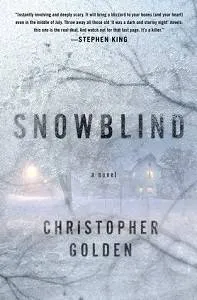
My Kryptonite: Anthropomorphic Animals
“I think I could turn and live with animals
They are so placid and self-contained,
I stand and look at them long and long.
They do not sweat and whine about their condition,
They do no lie awake in the dark and weep for their sins,
They do not make me sick discussing their duty to God,
Not one is dissatisfied,
Not one is demented with the mania of owning things,
Not one kneels to another,
Nor to his kind that lived thousands of years ago,
Not one is respectable or industrious over the whole earth.”
That’s my fellow husky, bearded guy Walt Whitman in Leaves of Grass, though I first encountered those lines in the opening pages of Sheila Burnford’s book The Incredible Journey, about two dogs and a cat lost in the wilderness. Disney made three movies out of it if you count the one where they’re on the loose in San Francisco.
Anyways. I’ve always been to drawn to erudite animals, decked out in peacoats, standing erect. I’ll take them over human characters every time. They were some of my earliest teachers. Winnie the Pooh taught me to be Too Smart for Strangers. Aesop’s fables taught me crows are generally dicks. James and Deborah Howe made me want to be a storyteller with a little Avon paperback called Bunnicula. I must’ve gotten something vital out of Zoobilee Zoo. So many hours. I must have.
And lest I leave out comics for too long on a site such as this, I think one of the boldest, most honest depictions of family plays out between a young mouse and his father (also a mouse) in Art Spiegelman’s MAUS. I don’t know if it’s because they’re mice that it works, but I don’t believe it hurts. Is it reductive in any way to depict the nazis as cats, the jews as mice? Does it help for focus or does squash any hope for nuance and complexity? Would it be a better book with human characters? I’m going to take a radical stance: I don’t truly know. I just know that it works like this just fine, and it likely opens up the narrative to younger audiences for whom it won’t be the only experience reading about the Holocaust and its fallout.
Juan Díaz Canales and Juanjo Guarnido do a tremendous sendup to noir tropes with Blacksad, a suave black cat gumshoe navigating a world of cold-blooded lizards, weasel weasels, and hulking gorillas. It’s intentionally overt, with bigoted arctic animals playing more as farce than metaphor. The Joe McCarthy stand-in is a bona fide cock come to roost.
My most recent brush with anthropomorphic animals came with Boom! Studios’ Wild’s End by Dan Abnett and I.N.J. Culbard. Wind in the Willows meets War of the Worlds in this charming, thrilling adventure set in the English countryside. A dog with a past. A chain-smoking ghost-writer cat. A fox who poaches with a burlap sack. And so much tweed. It’s all my stuff.
But why? Aside from the marvelous craft of the thing?
I think it goes back to Aesop and our appreciation need for symbols. You’re talking to a guy who adores puns and wordplay and metaphor, and animal archetypes play into just as colorful a form of pattern recognition. It’s an extension of vocabulary. Long ago we decided that owls represent wisdom, and that stuck. Sometimes, though, we update it, casting the owl as pompous, stuffy, elitist. And it’s that exploration in variables and expectations that opens up the possibility for insight. What does that depiction of wisdom gone sour tell us about society’s complicated relationship with knowledge and the knowledged?
If we frame real-world conflict as a simple game of cat and mouse, we can’t help but see the complexity remaining in the margins, the gutters, the blank spaces. And through some alchemy, we’re not looking at cats and mice anymore. We’re looking at characters.
Overthinking it? Maybe. Partly. Because if I’m honest with myself, I simply love animals. They make me smile. They’re visually interesting. They’re pure, but textured.
And I’ll always remember the handful of weeks when I got to be one.
Few of my friends in the Royal Masque were terribly happy with the selection of our fall show in my high school senior year. A little-known English musical based on the ugly duckling story, Honk! was kid’s stuff through and through. Then, that was typical for our first productions each year (Aladdin, Scrooge, etc.) But from that very first after-school announcement and toasty xeroxed sides, I sensed an overwhelming disdain for the material that kept my classmates at arm’s length from the story. Maybe we’d been hoping or campaigning for some alternative; I can’t recall.
But when it comes down to it, I think they just thought it was embarrassing to play-act like chickens and frogs.
Me, I had no such reticence. I was thrilled. Not only was my best friend Andy, an actual talent, cast in the lead, but I landed myself the kind of colorful secondary role I’d always hoped for since that call back for Harry the Horse the previous year (Despite my studied Sheldon Leonard cadence, I ended up as the tediously abrasive Lt. Branigan instead, ah well). Donning rust-colored overalls, harvest plaid, gold Timbs, and a knotted red scarf, I fully embraced the flamboyant strut of Turkey, mayor of the barnyard. The role called for a bass or baritone, but to the musical director’s quiet but conspicuous chagrin, I opted for Jerry Lewis camp during the actual performances. Following the matinee for local elementary schools I learned that Turkey was a hit with the kids, and was asked to autograph a dozen playbills. I was bright enough to know they didn’t want my own name.
“Gobble, gobble hey!” I wrote. “Your pal, Turkey.”
____________________
Follow us on Twitter for more comics goodness!












